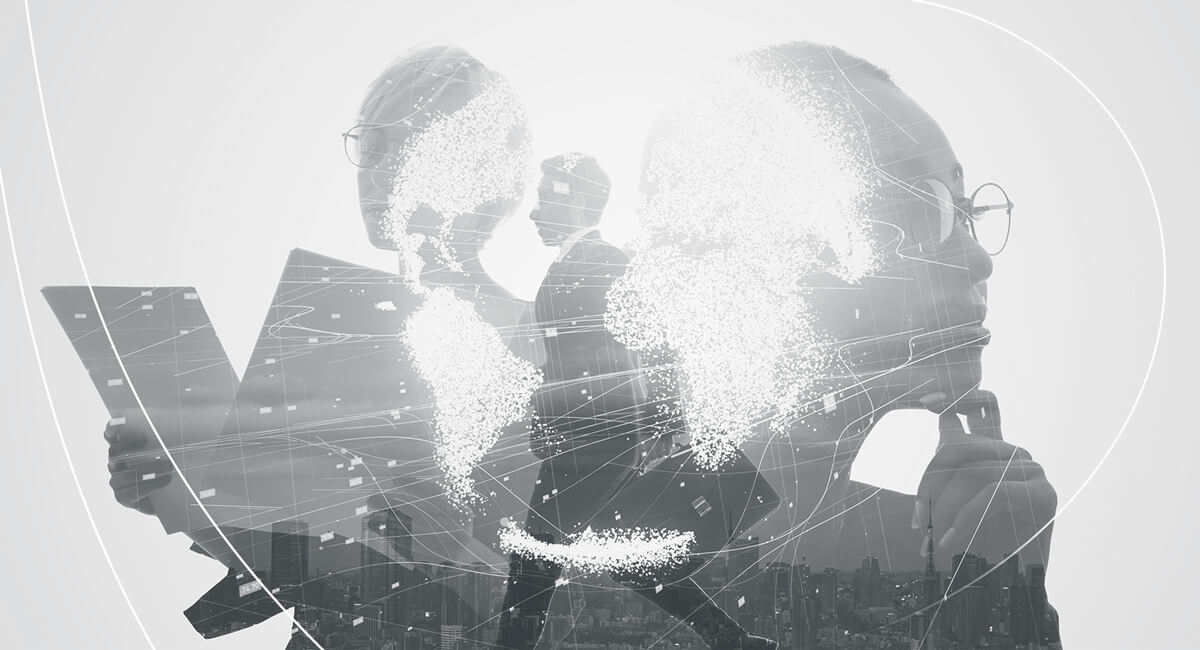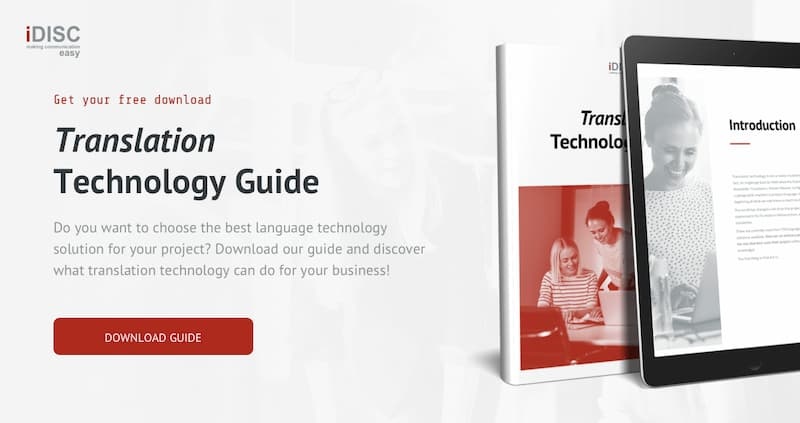Today, we have access to large amounts of information from anywhere in the world and through any channel. The confluence of cultures and the ongoing communication between countries has made society a global group in which everything is interrelated.
Every day, we receive countless news from all over the world, access information and communicate with people from outside the realms of our language and culture.
This simply would not be possible without translation.
Translation allows us to communicate anywhere in the world. If we look at it in market terms, we know that the current market is a global one. This means that, thanks to translation, language barriers can be overcome, allowing access to international markets.
The important role that translation plays in our lives, combined with technological advances in recent decades, has created a union—almost a fusion—of these two disciplines, resulting in the concept of translation technology. In other words, this is the use of software to improve the way written text is converted from one language into another.
This emerged from the need for better and faster translation services, giving rise to all kinds of translation technologies, the most promising currently being machine translation (MT).
However, is this really the best way to combine efficiency and language quality? Where is the future of translation technology going?
History and evolution of translation technology
Firstly, let’s clarify the concept of machine translation: it is the automated process of translating from language A to language B, without human intervention or assistance.
Its origins date back to the Second World War, when interest in translating and decrypting messages from the other side was top priority. In 1949, The Rockefeller Foundation, with Warren Weaver (cryptographer) leading the way, began to develop the first hypotheses on the use of computers in the translation process.
In the years following, different universities began conducting studies on this new field. It wasn’t until 1954 that the first IBM prototype was unveiled at Georgetown University. This system was capable of translating 49 phrases and was programmed with 6 grammatical rules.
A great deal of interest was generated with this prototype, which remains to this day.
Types of machine translation
Translation technology isn’t just MT, it also includes other tools such as translation memories, virtual interpretation technologies, voice-to-text technologies and terminology management tools.
However, machine translation accumulates great success as a translation tool thanks to its low dependency on human intervention.
Since the creation of machine translation, there have been three distinct types:
Rule-Based Machine Translation (RBMT)
This type of machine translation is based on an engine that analyzes the source language syntax and uses linguistic rules and dictionaries to carry the meaning over to the target language.
Statistical Machine Translation (SMT)
Translations are rendered using statistical models and a bilingual corpus. This means that it works by using other translated texts, inputted beforehand, as a reference.
Neural machine translation
The translation technology sector took a major leap forward with the emergence of Neural Machine Translation (NMT). This type of automated translation uses artificial intelligence (AI) to render translations.
This technological leap represented a change for machine translation. The mechanism attempts to emulate how a human translator would think to provide the most accurate result.
The engine learns from previous translations and is able to make predictions. It doesn’t simply translate word by word, but can understand full sentences and the context within paragraphs.
This breakthrough generated considerable interest among those seeking to translate large volumes of words, as well as highly standardized commercial documents.
However, it’s not a perfect process… yet. Using this new translation technology tool still produces certain errors, such as lack of legibility, slipups with negative particles, unsuitable terms for the context, etc.
It shouldn’t be forgotten that this is technology that is still being perfected and it is not a professional human translator.
Uses of MT
Machine translator, as previously mentioned, has certain drawbacks when dealing with particular types of text. However, for less complex texts it can be a highly effective and profitable solution.
Some advantages of machine translation are:
- High level of terminological consistency and precision.
- An efficient and effective process.
- Lower translation cost.
Either way, it’s important to keep the purpose of the translation in mind, as machine translation may not be the most suitable method.
MT has a long road ahead of it, but it is speeding along. It’s true that improvements in this translation technology have resulted in lower costs for certain projects, but the creative limitations of this tool must be taken into account.
Ideally, once the machine translation tool has been used, a professional translator post-edits and proofreads the texts.
At the end of the day, there are certain translation needs that can only be met with a human touch.
It’s likely that, with time, we will see the balance tip and, instead of talking about computer-assisted human translation, we’ll be talking about human-assisted computer translation.
As you can see, there are several translation technologies and these are now essential for everyday translation tasks. The important thing is to make the right choice for your needs.
We hope you’ve found this article helpful. You can find more on our blog. You can find out more about our translation services and if you need advice from a translation company, feel free to get in touch.





